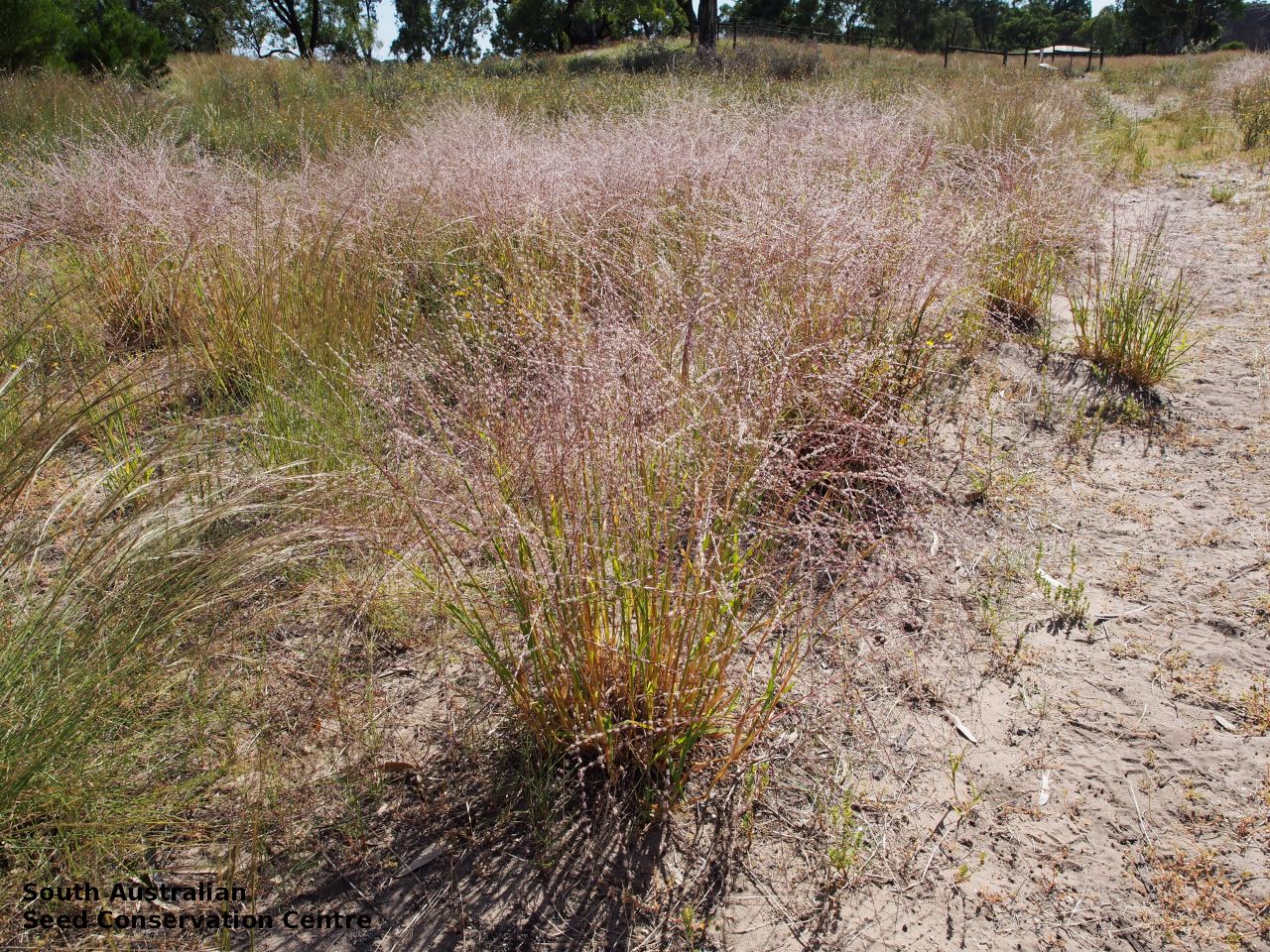
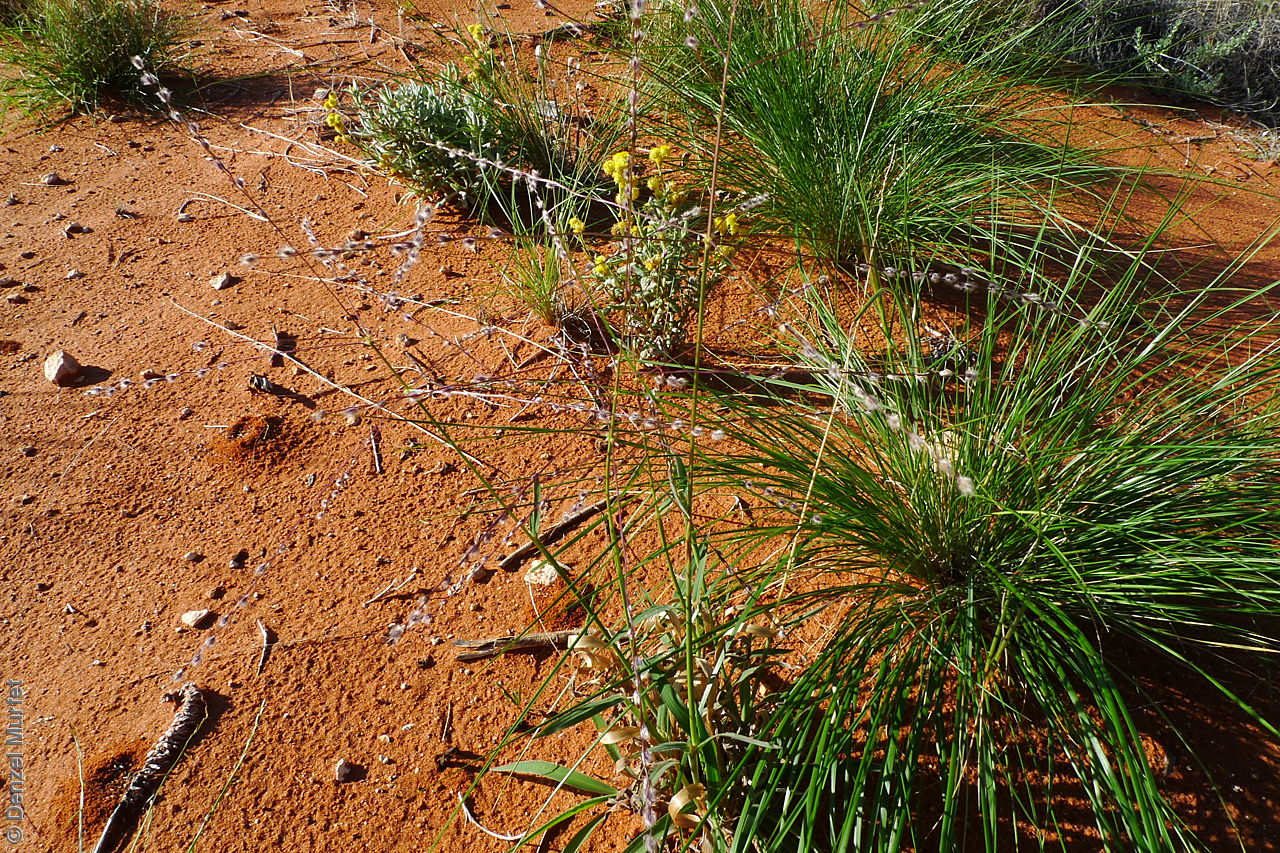
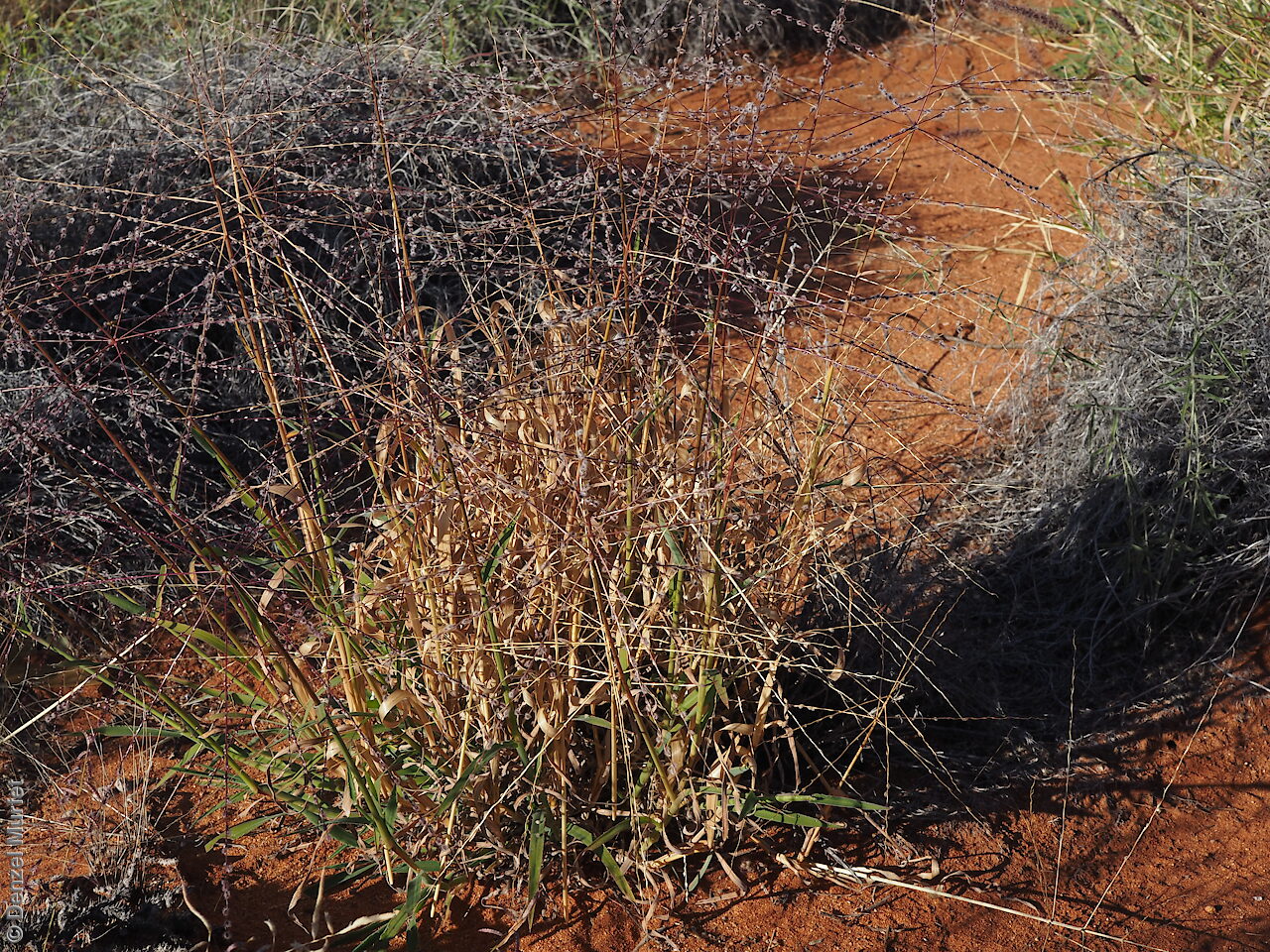
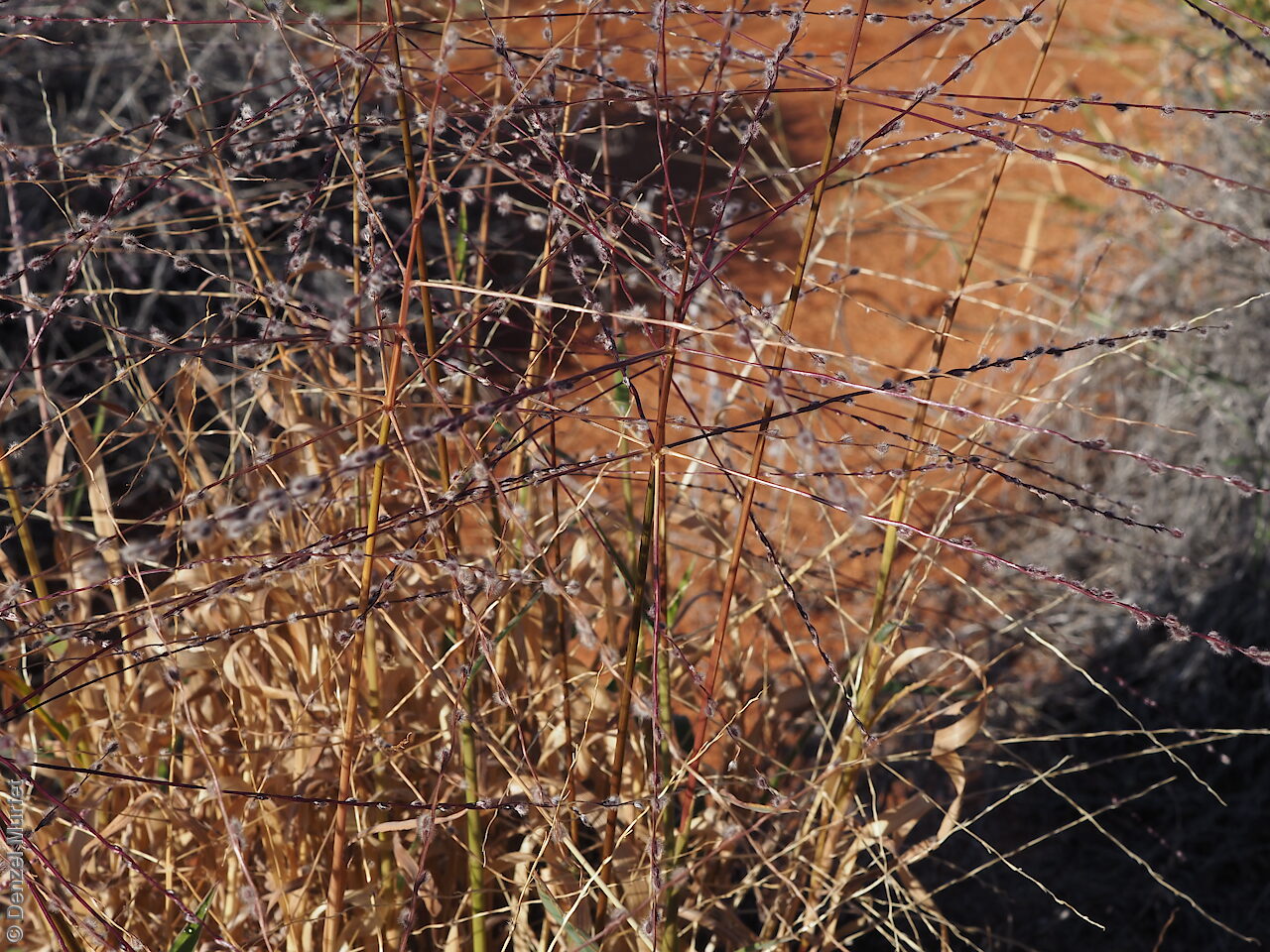
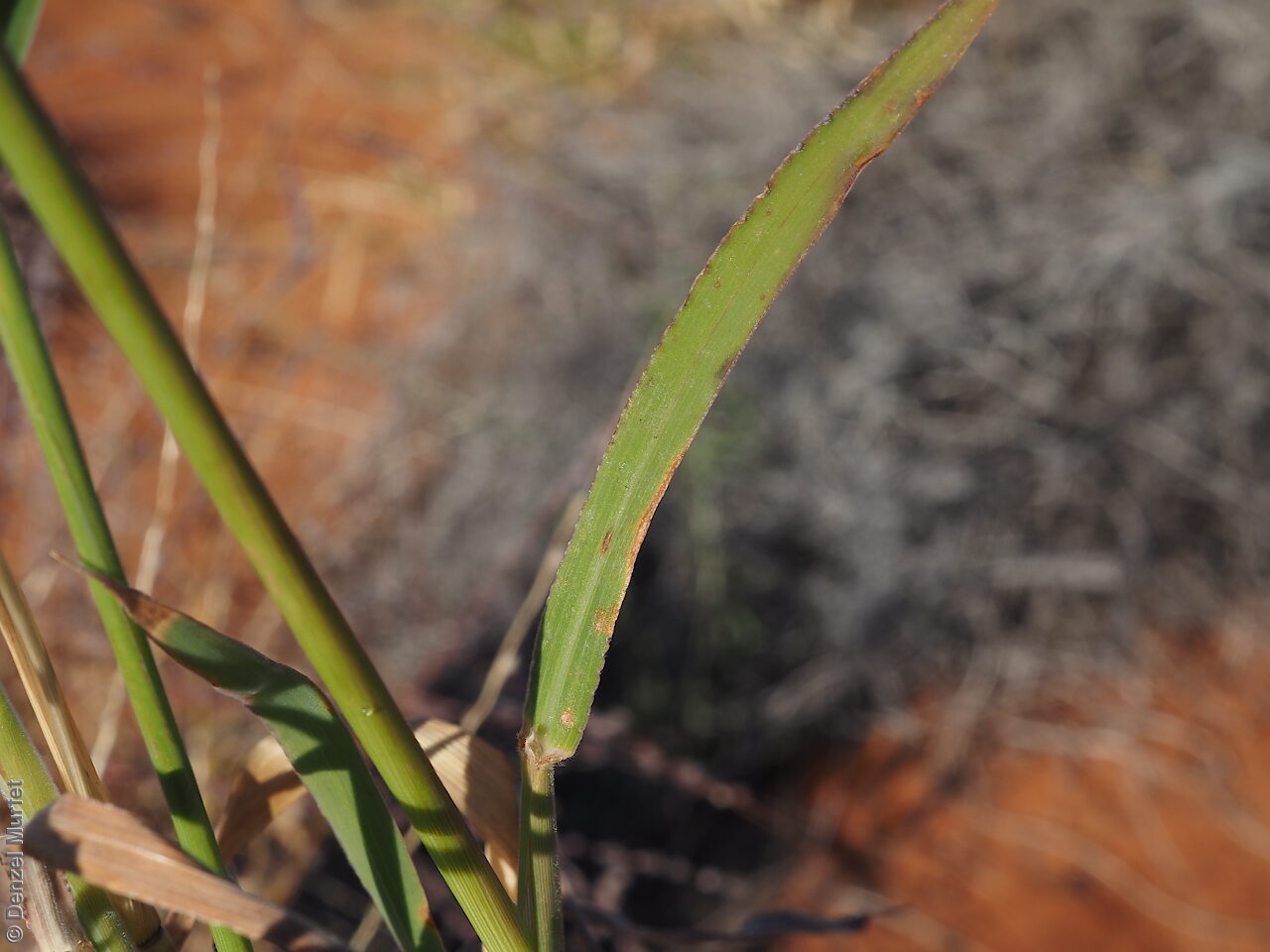
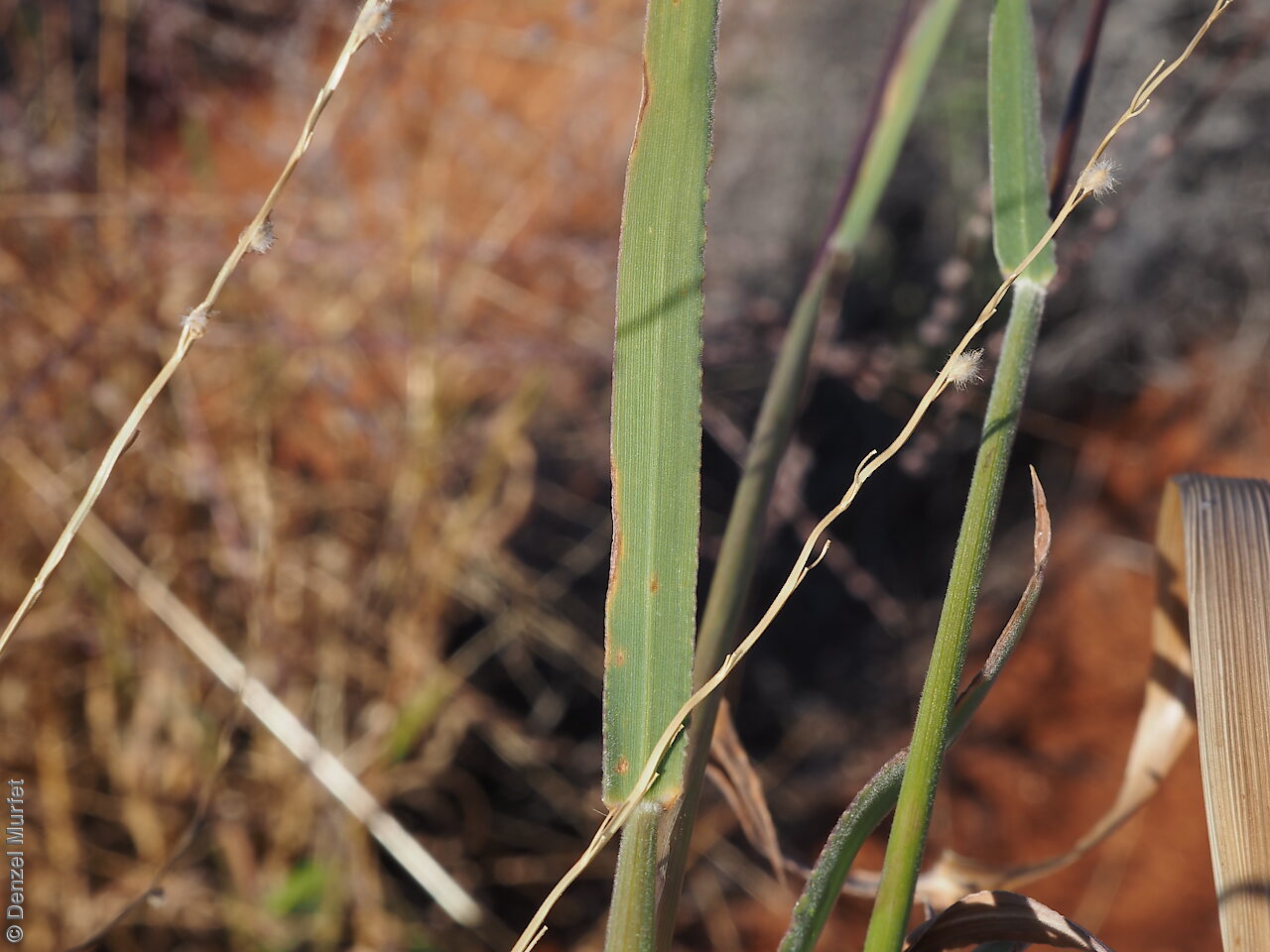
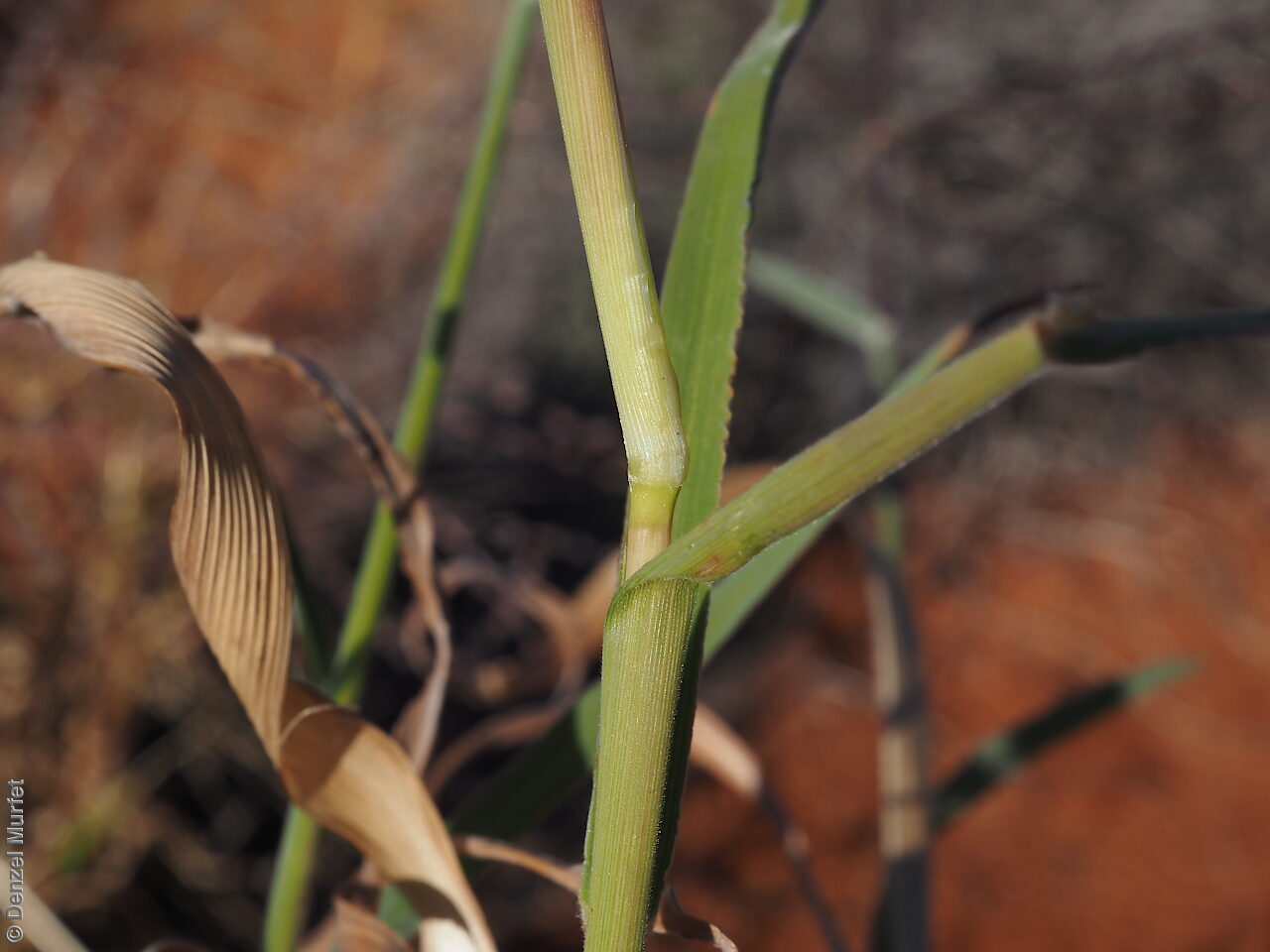
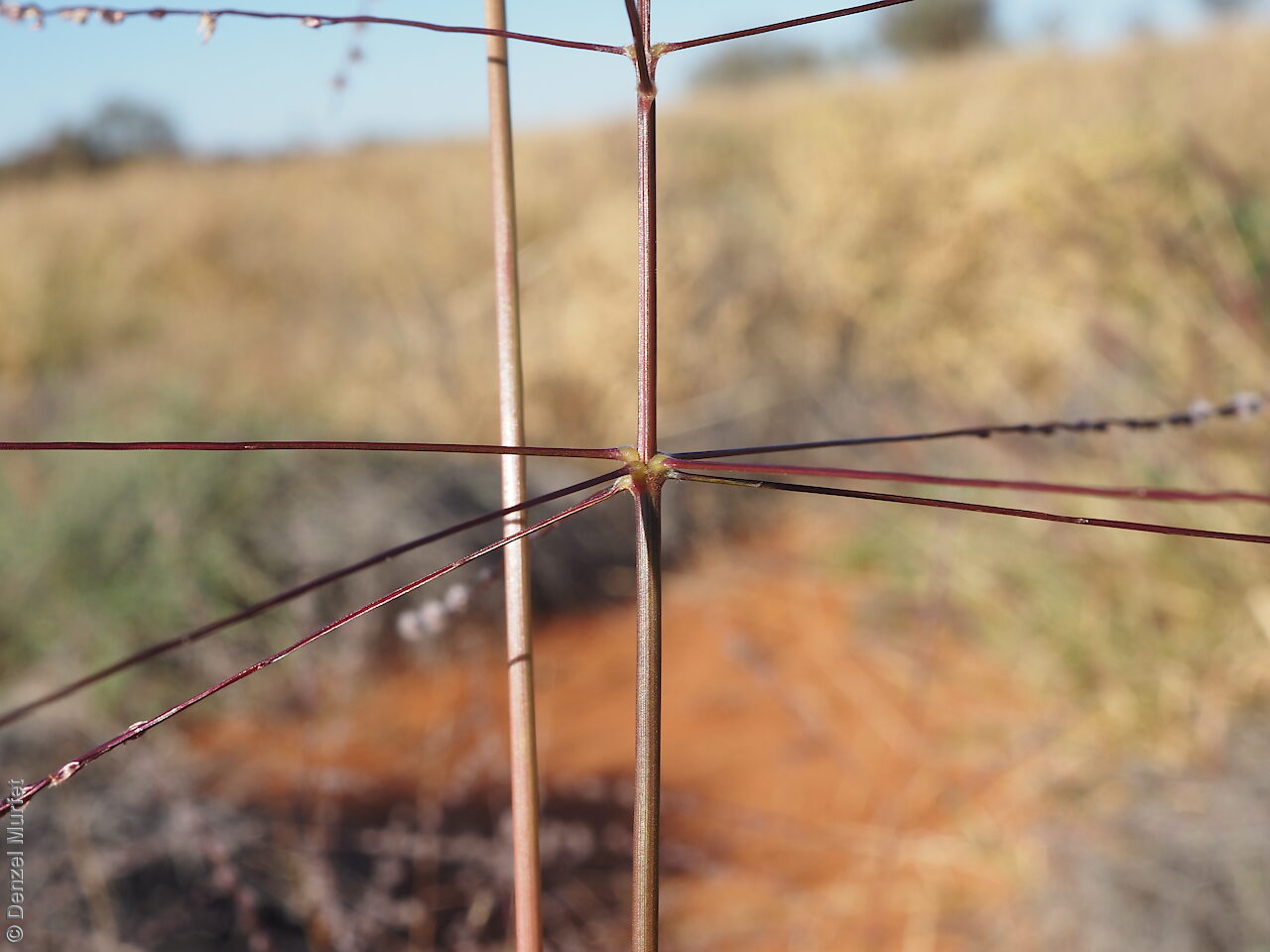
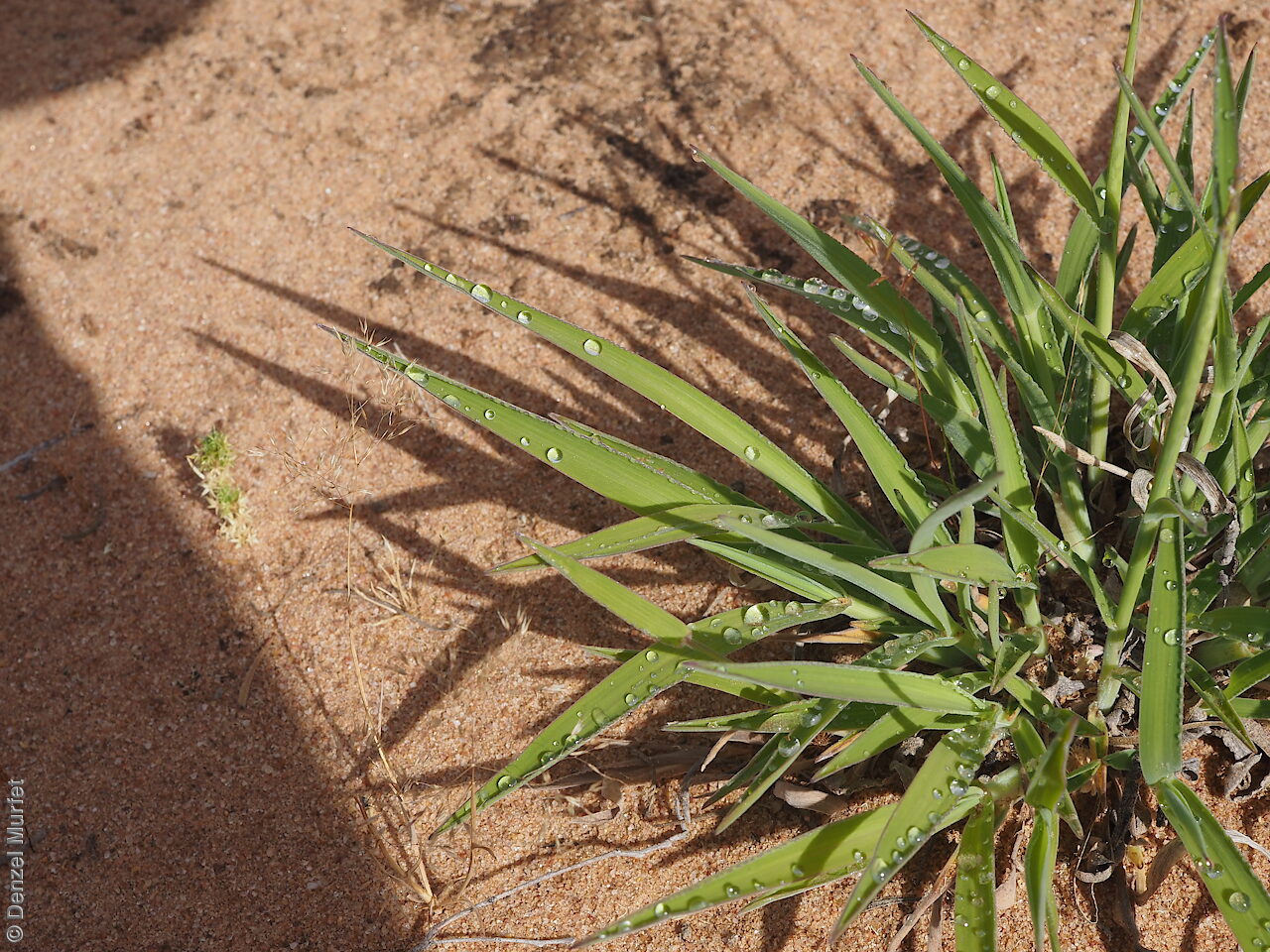
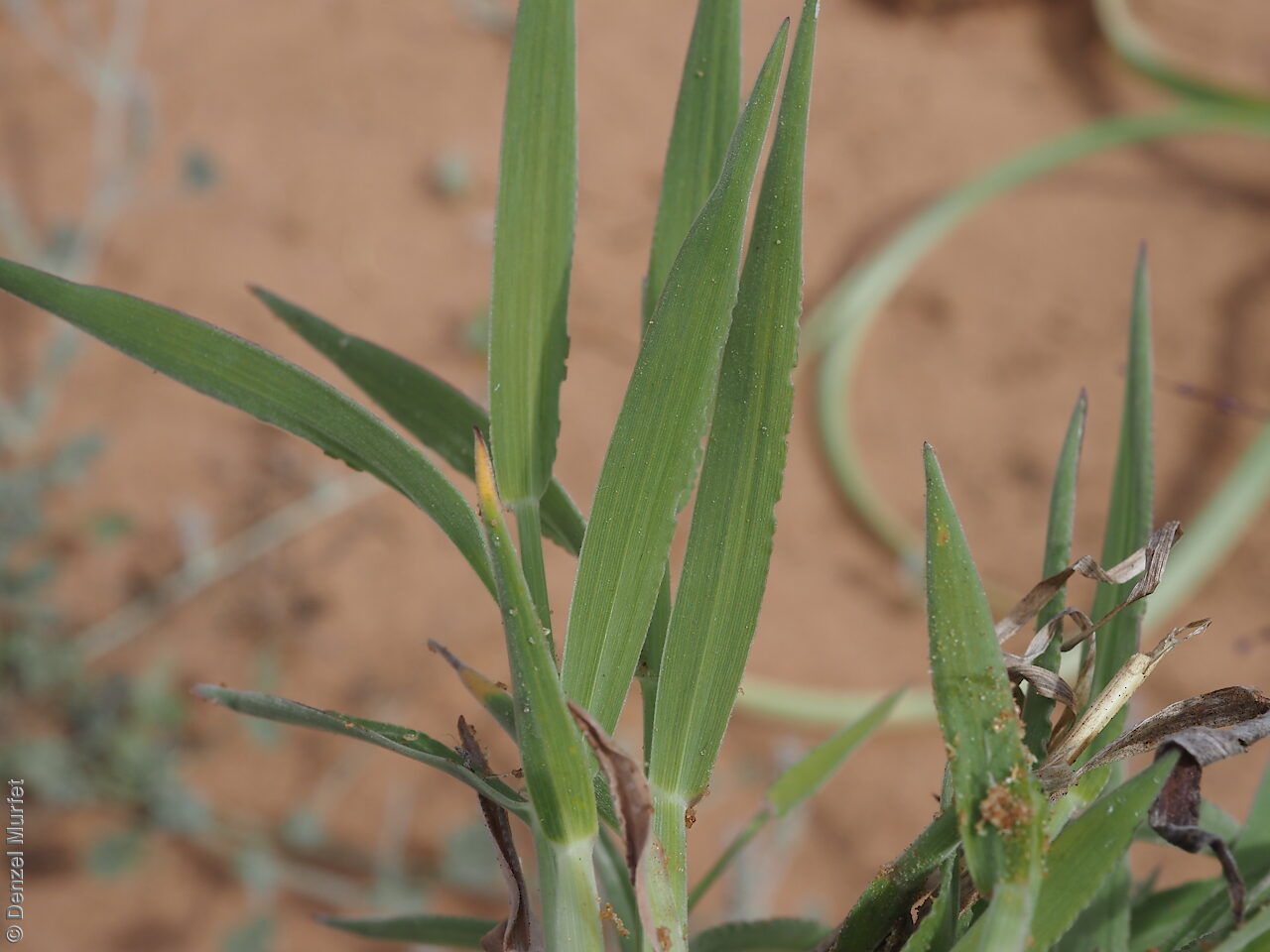
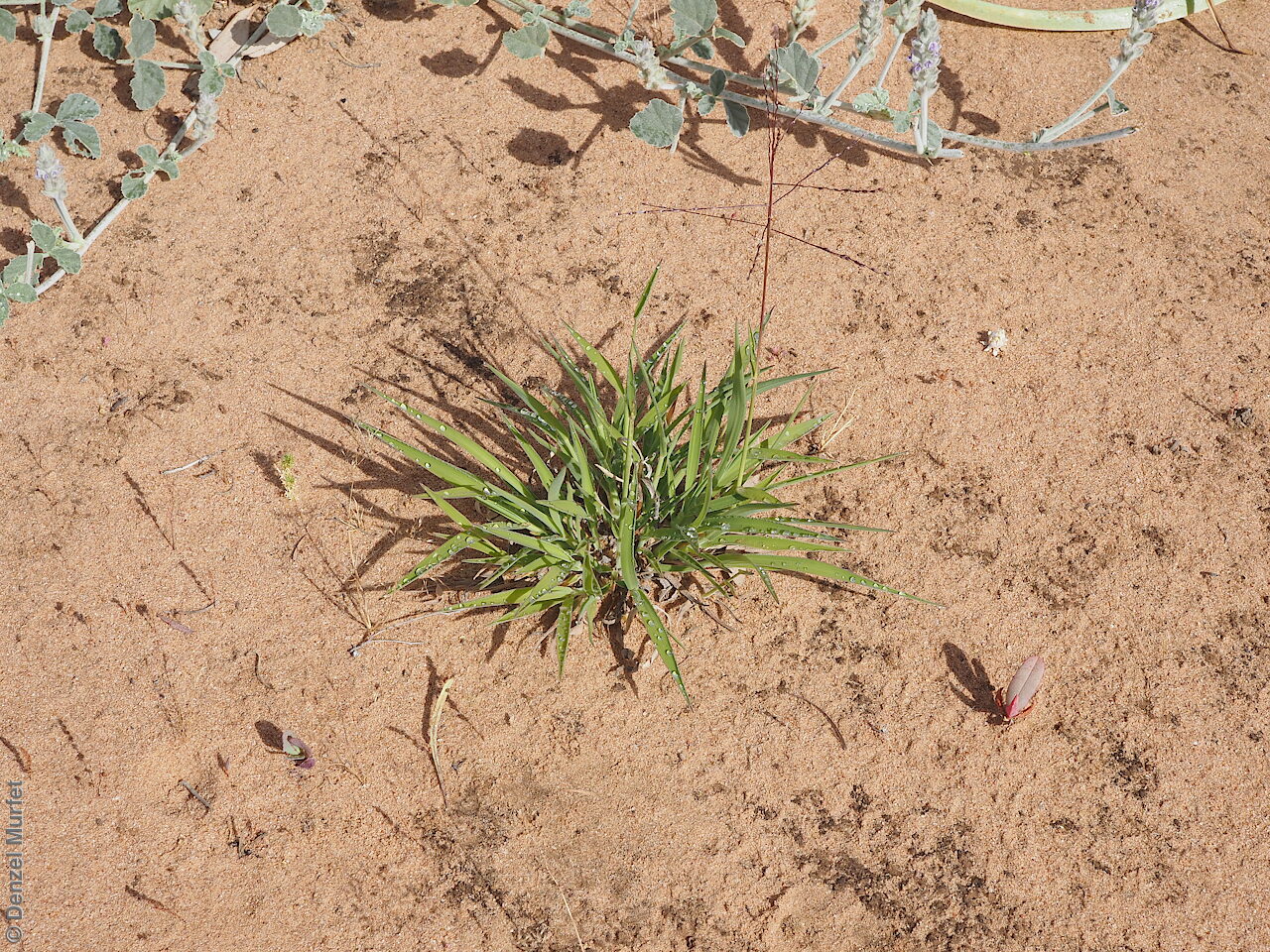
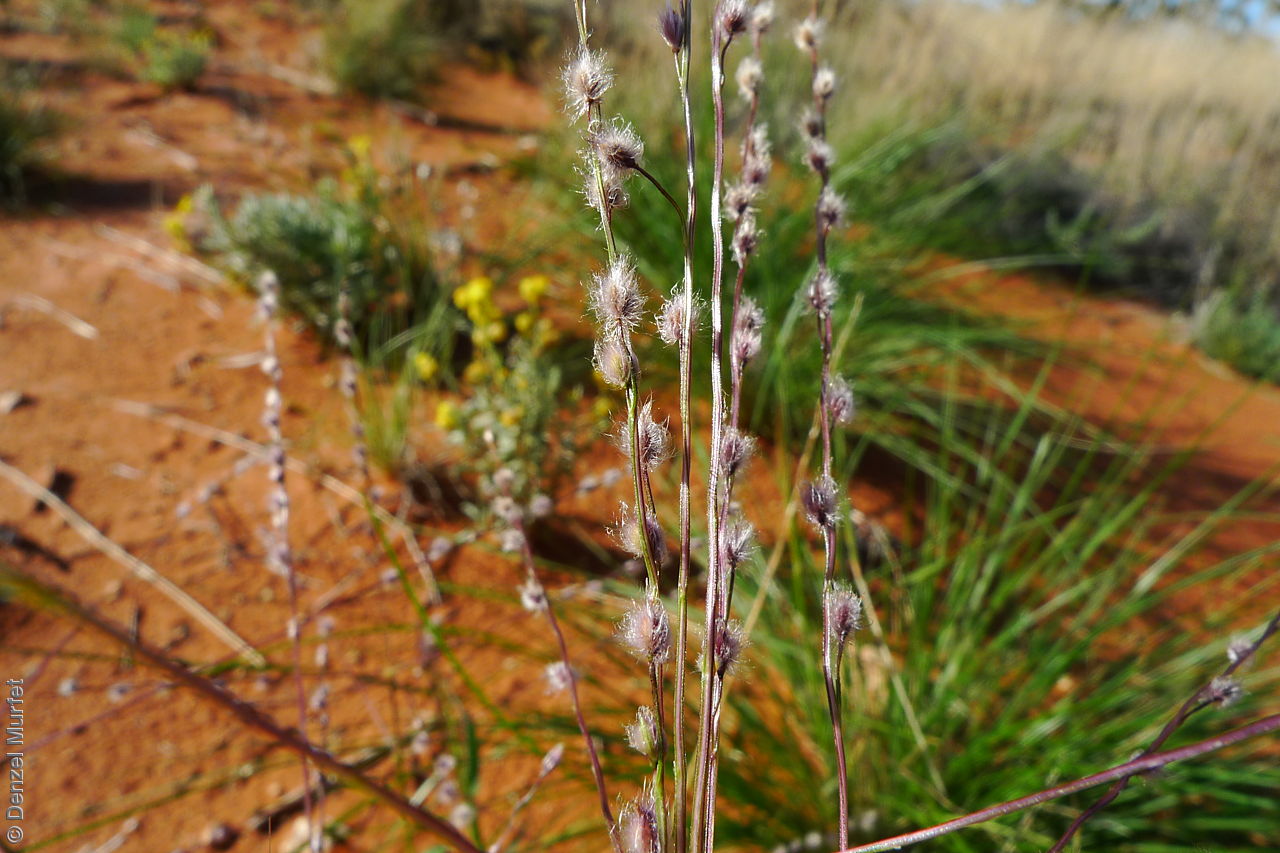
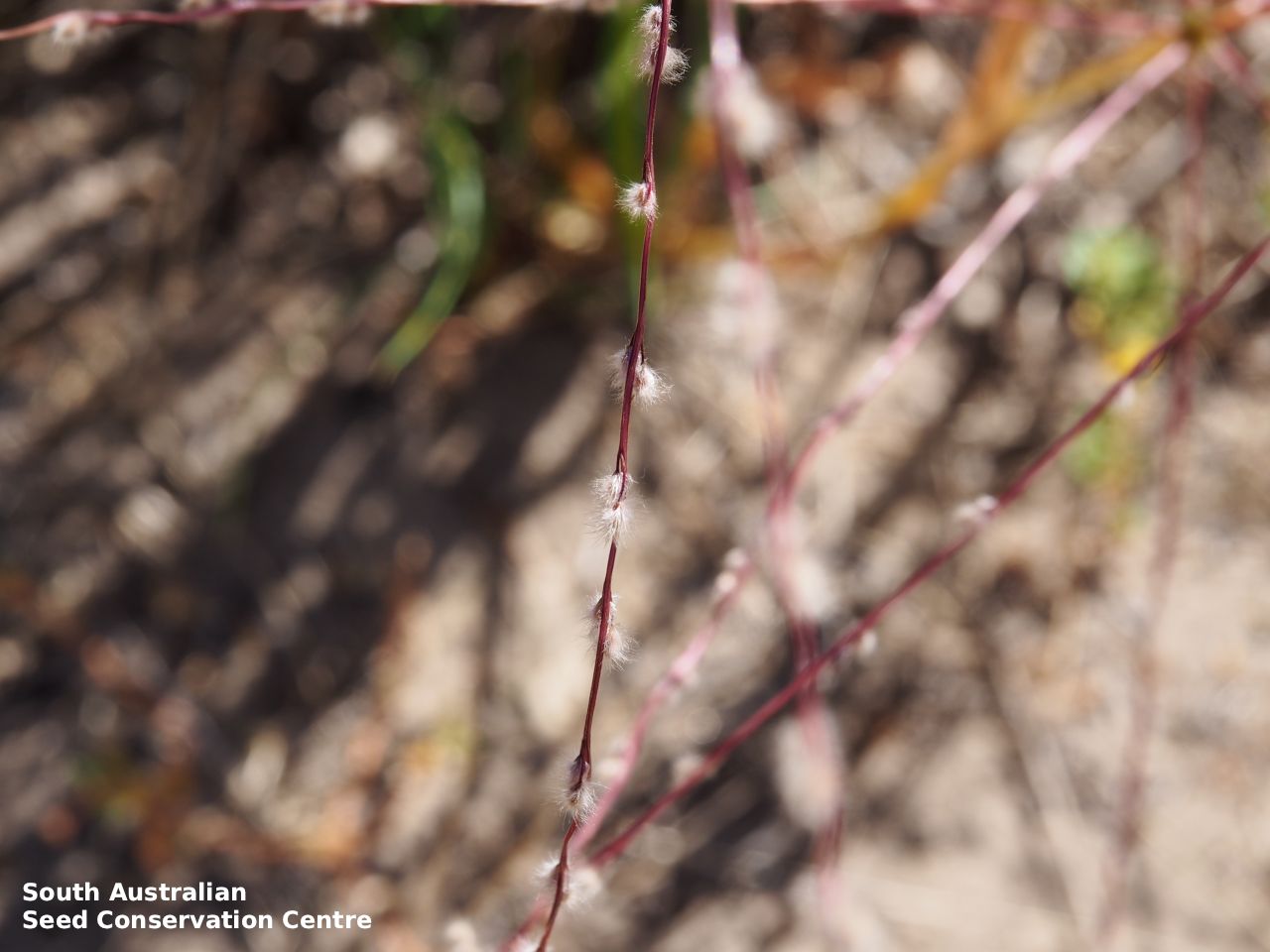
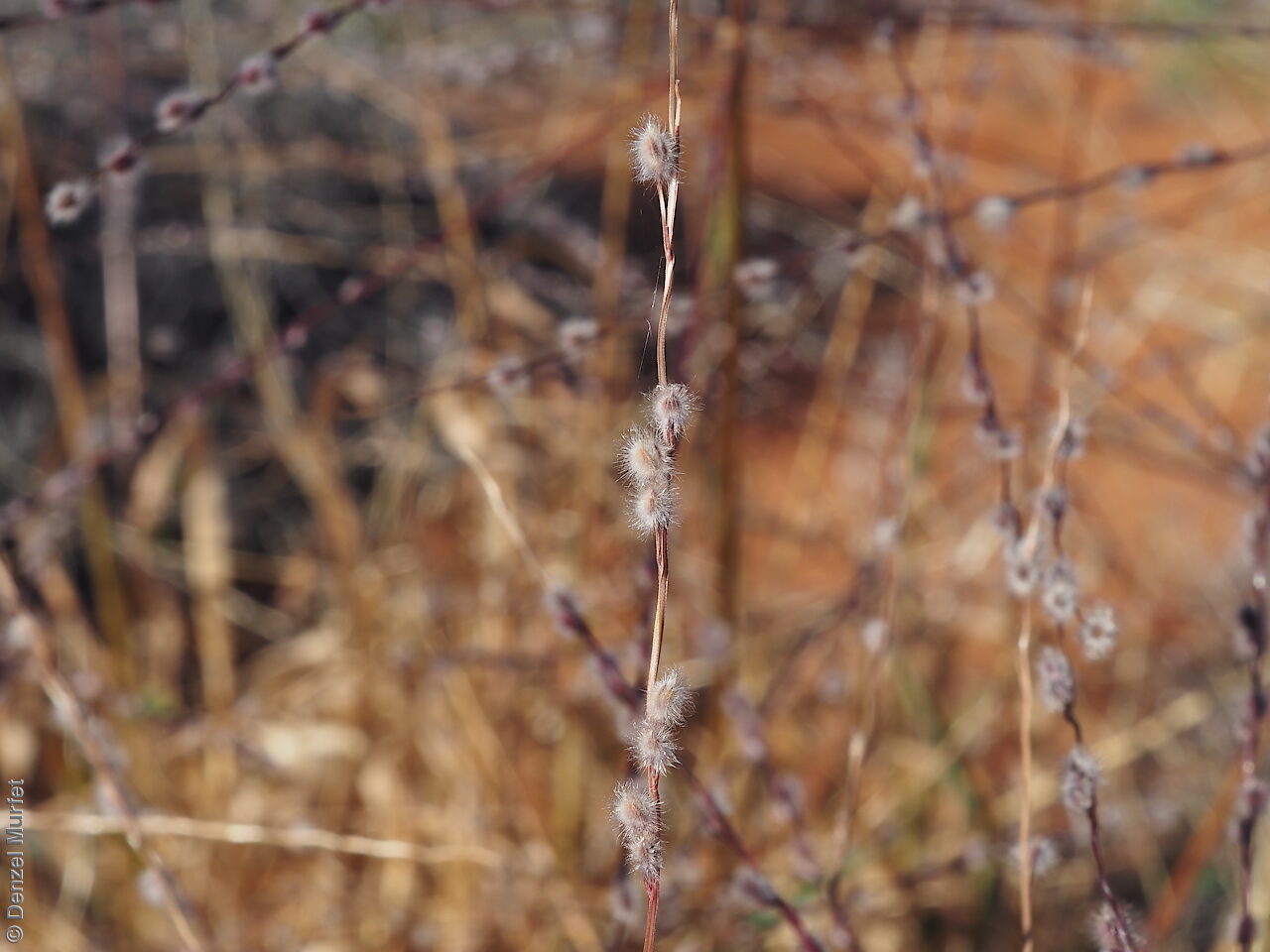
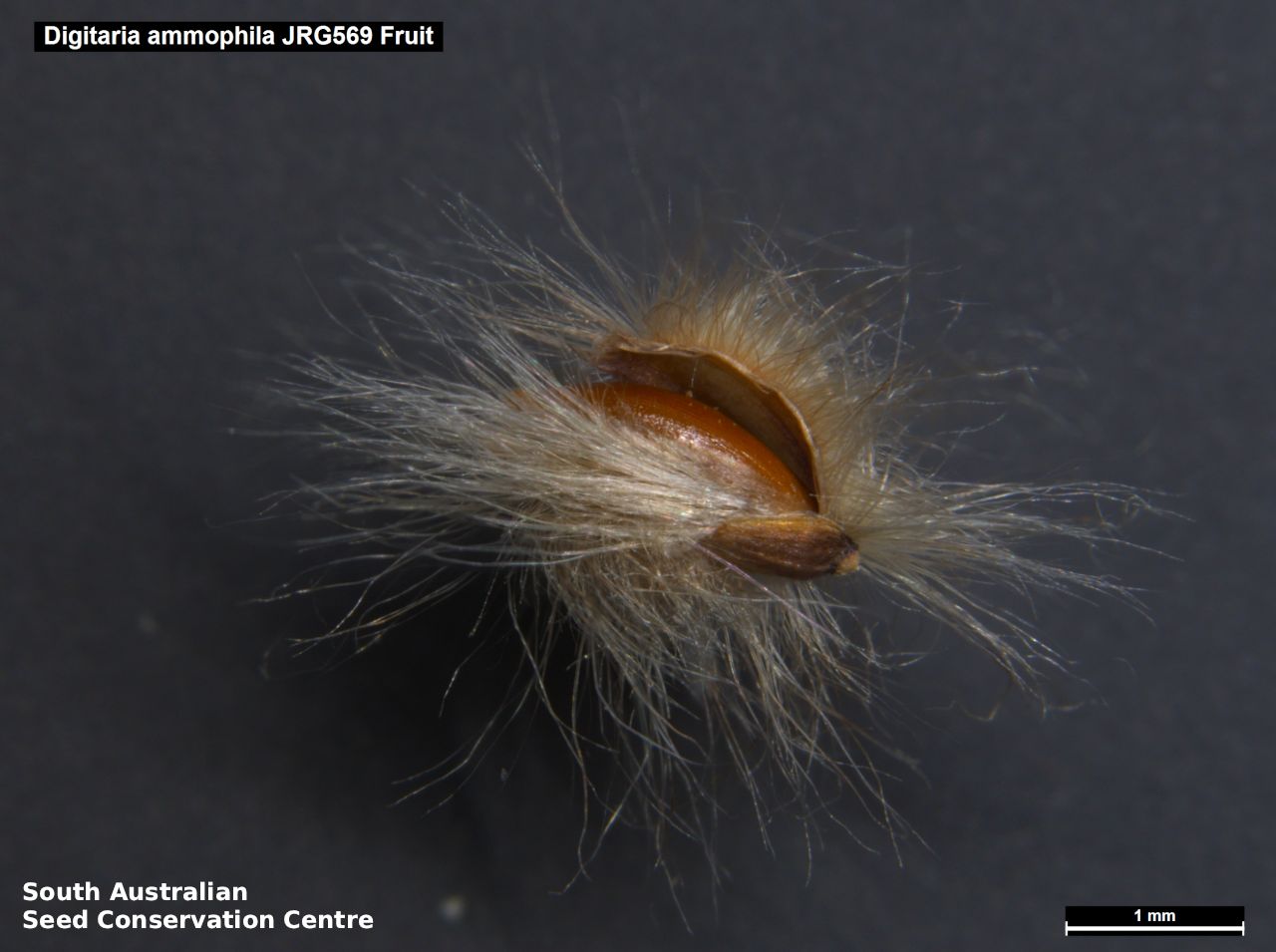
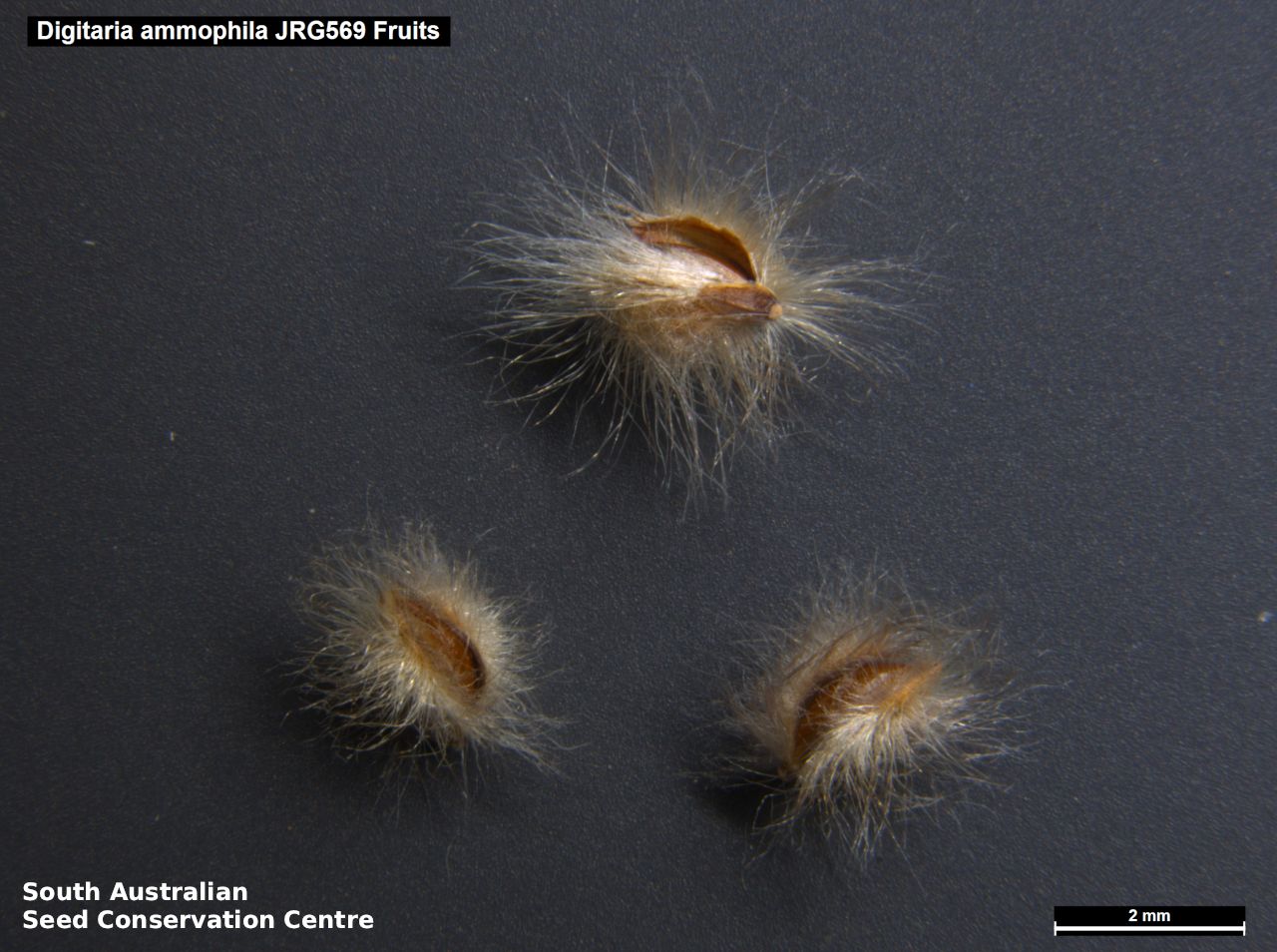
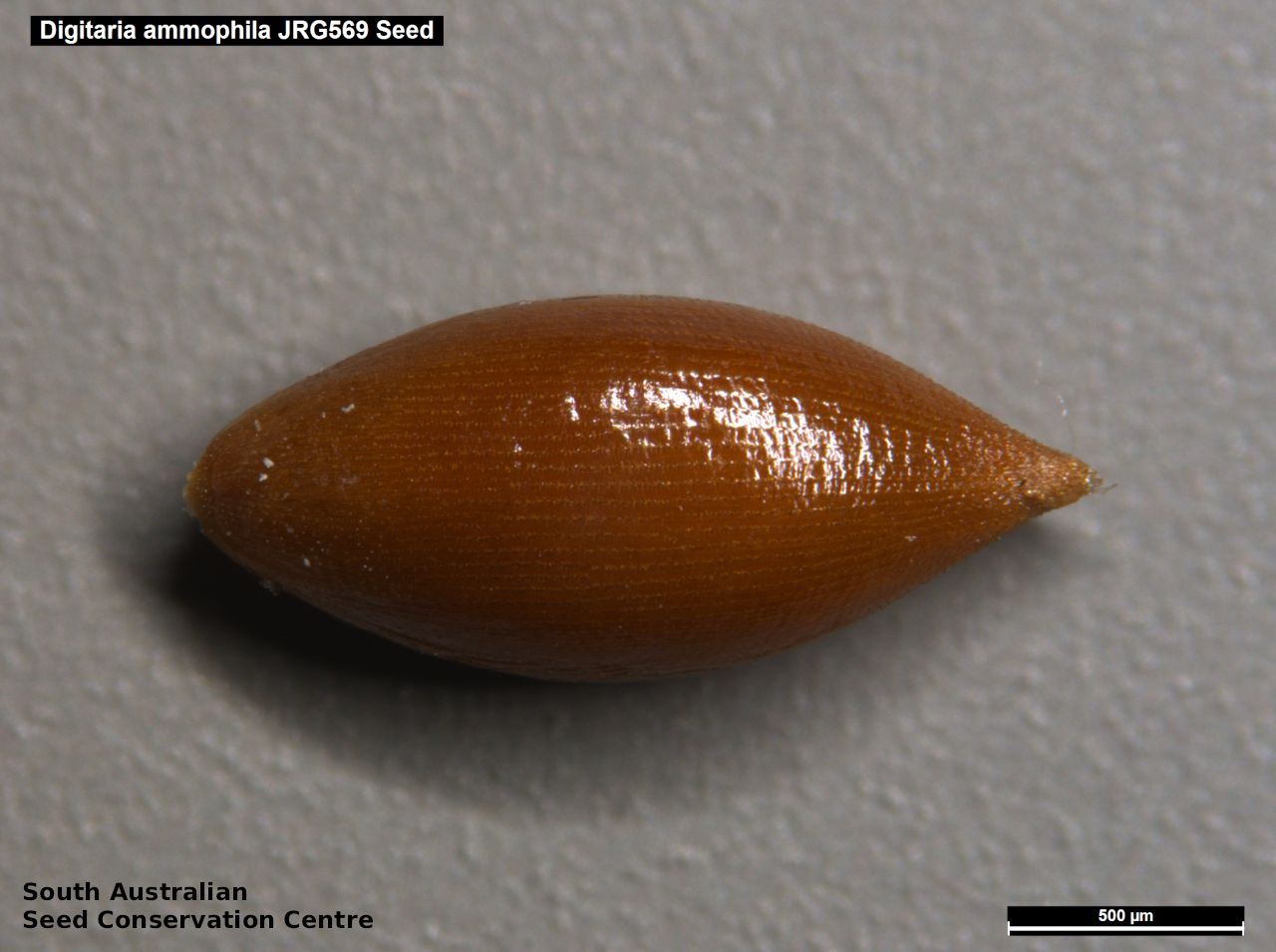
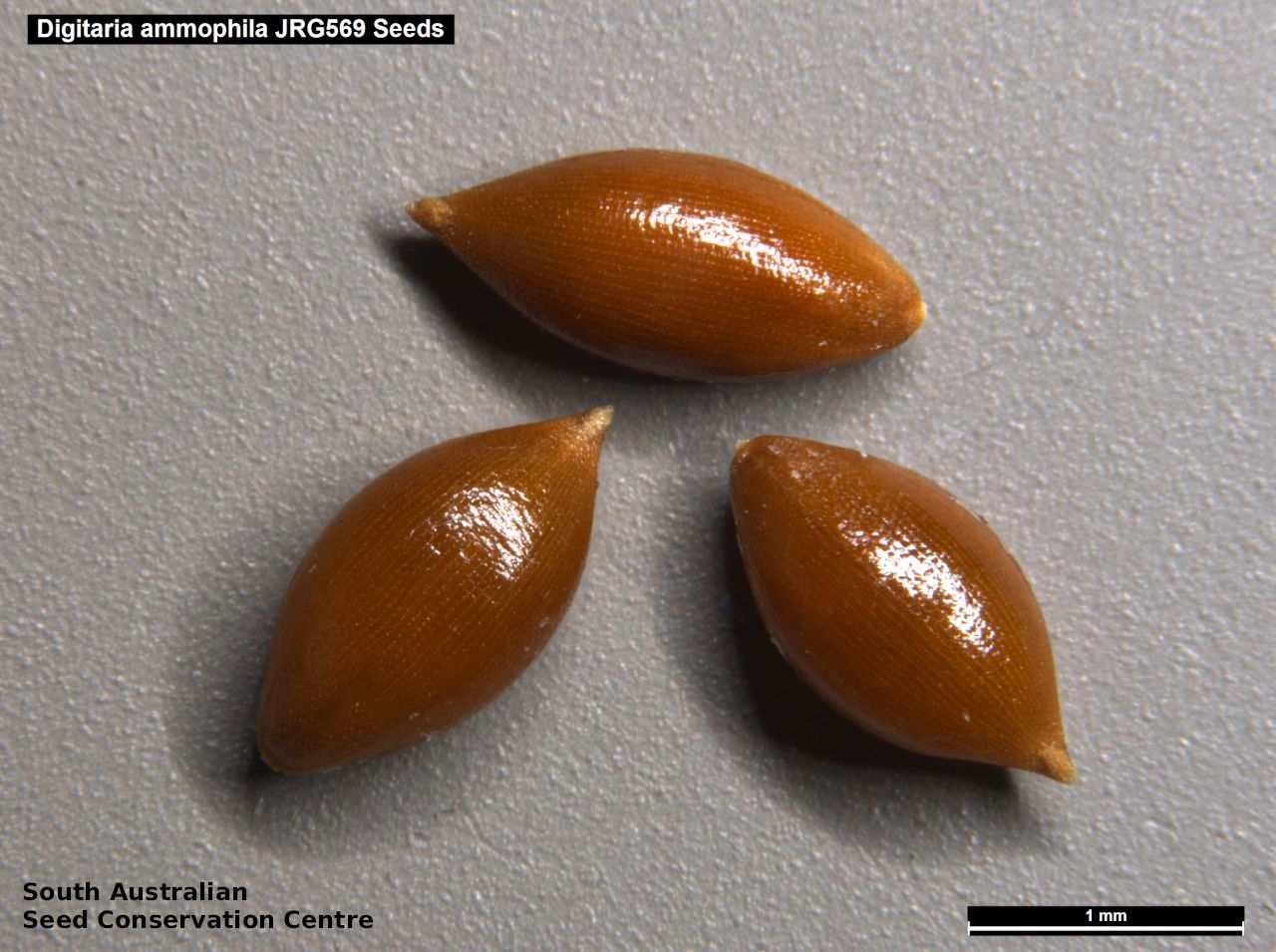

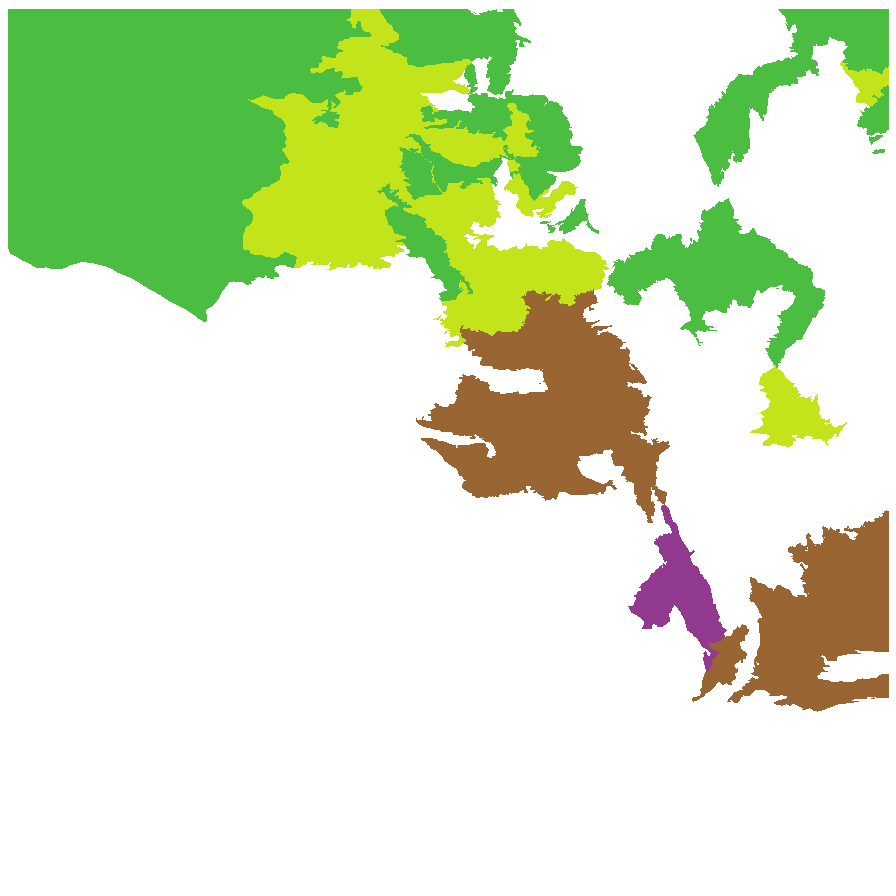
Botanical art
Prior names
Panicum ammophilum
Panicum divaricatissimum var. ammophilum
Common names
Silky Umbrella-grass
Spider Grass
Etymology
Digitaria from the Latin 'digitus' meaning finger, alluding to the digitate inflorescence. Ammophila from the Greek 'ammos' meaning sand and 'phileo meaning love, alluding to it's sandy habitats.
Distribution and status
Found scattered across much of South Australia, growing in a variety of habitats in semi-arid woodlands, shrublands and arid tussock grasslands. Also found in all mainland states. Native. Common in South Australia. Rare in Victoria. Common in the other states.
Herbarium regions: North Western, Lake Eyre, Flinders Ranges, Eastern, Eyre Peninsula, Murray, Southern Lofty, Green Adelaide
NRM regions: Adelaide and Mount Lofty Ranges, Alinytjara Wilurara, Eyre Peninsula, South Australian Arid Lands, South Australian Murray-Darling Basin
AVH map: SA distribution map (external link)
Plant description
Shortly rhizomatous perennial grass with erect stems to 60 cm high, base of plant thickened and hairy. Leaves velutinous, blade flat or broadly channelled, to 15 cm long and 7 mm wide, with pale, thickened, often finely undulate margins. Inflorescence a panicle to 25 cm long, composed of narrow racemes. Lower racemes whorled, upper racemes successively shorter. Spikelets 2-2.5 mm long, villous with white silky hairs as long as and concealing the spikelets which are in pairs on unequal pedicels. Lower glume ovate, to 0.5 mm long, upper glume 3-nerved, elliptic, as long as the spikelet. Lower lemma 5–7-nerved, equal to upper glume, both villous. Lower palea vestigial or absent, upper (bisexual) floret subequal to spikelet, lemma elliptic, shortly acuminate, slightly rounded dorsally, smooth or finely striate. Flowering between February and April. Seeds are orange brown ovoid grain to 2 mm long and 1 mm wide, shiny and smooth surface. Seed embryo type is lateral.
Seed collection and propagation
Collect seeds between March and June. Use hands to gently strip seeds off the mature seed spike that are turning purple-brown. Mature seeds will come off easily. Alternatively, you can break off the whole seed spike. Place the seeds/spike in a tray and leave to dry for two weeks. No further cleaning is required if only seed collected. If seed spikes collected, use hand to strip off the mature seeds. Store the seeds with a desiccant such as dried silica beads or dry rice, in an air tight container in a cool and dry place. Seed viability is usually high.